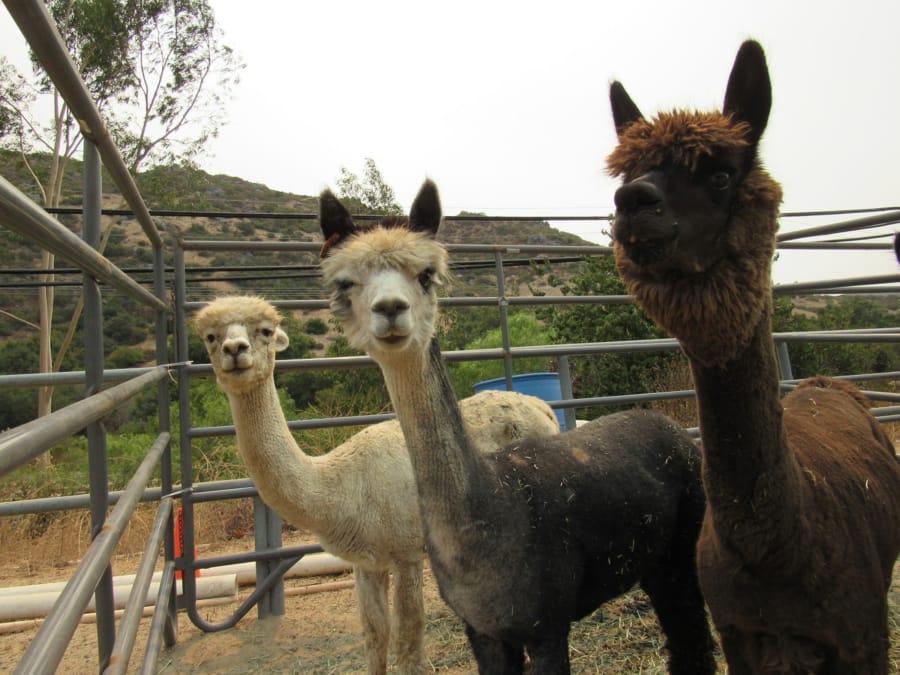SAN DIEGO — While the Valley fire that destroyed dozens of homes and took the lives of many animals in Alpine and Jamul this month may be but a memory for many, damage from that and other wildfires has lasting impact.
Smoke from wildfires not only affects people but also pets, horses, livestock and wildlife, experts agree. If you can see or feel the effects of smoke, the American Veterinary Medical Association says, you should also take precautions to keep your animals safe.
The AVMA recently shared some important recommendations for pet and livestock owners about post-fire care. Several local veterinarians overseeing animals in the county concur with the advice and offer even more suggestions.
Dr. Douglas Kratt, the Wisconsin-based president of the AVMA, says that animals with cardiovascular or respiratory disease are especially at risk from smoke and should be closely watched during all periods of poor air quality, especially after a major wildfire.
Dr. Daniel Barbour, a veterinarian and the San Diego Humane Society veterinary manager, said that although there may be some animals under treatment for thermal burns from the Valley fire, the effects of the smoke may now be the bigger issue. The fire, which began Sept. 5, is now fully contained, reports show.
While the air quality hasn’t been that poor in San Diego since the Valley fire, especially compared with air in other areas in the West, Dr. Cassie Hamilton, chief veterinarian for the County Department of Animal Services, says pet owners must take extra care of their animals who have underlying breathing conditions.
She said the best thing to do for livestock living outdoors is to try to limit their activity. Hamilton said that birds are the most susceptible to airborne particulates and that they can have lasting issues from post-fire air trauma.
Kratt said birds should not be allowed outside when smoke or particulate matter are present, and all pets should be kept indoors as much as possible and with windows shut. Dogs should be allowed outside for brief bathroom breaks, and outdoor activity should be avoided if air quality is poor, he said.
For livestock post-fire, he suggested limiting exercise or any activity that substantially increases breathing when smoke is visible. Give animals four to six weeks to recuperate after the air quality returns to normal, he said.
Other advice shared by the veterinarians includes providing plenty of fresh water near feeding areas; limiting dust exposure by feeding low-dust or dust-free feeds, and sprinkling or misting the livestock holding area. Barbour also suggested soaking hay in water before feeding to reduce dust particles and minimize respiratory tract irritation.
Wildfire smoke causes issues from inflammation of the eyes (conjunctivitis) and runny nose (rhinitis) and cough to more serious illnesses such as bronchitis and pneumonia, Barbour said.
Smoke inhalation can aggravate pre-existing disease conditions such as congestive heart failure and asthma, resulting in reduced lung function, he said.
The AMVA recommends keeping a close watch for signs of possible smoke or dust irritation in animals.
Those signs include coughing or gagging; difficulty breathing, including open mouth breathing and increased noise when breathing; eye irritation and excessive watering; inflammation of throat or mouth; nasal discharge; asthma-like symptoms; increased breathing rate; fatigue or weakness; disorientation or stumbling; and reduced appetite and/or thirst. If any of your animals are experiencing any of these signs, consult a veterinarian.
For Barbour, the topic of animals and fires is of particular interest to him because his father is a firefighter in San Diego County. Barbour explains that many people are familiar with smoke and fire from the perspective of a fireplace during the winter or a summertime beach bonfire. However, he said, there is a true science to fire.
“Smoke is essentially a gas made up of tiny particles,” Barbour said, “carbon dioxide, carbon monoxide, soot, trace minerals and other particular matter. The composition of smoke depends upon the material that burned. The fires in the Eastern San Diego County often burn more than vegetation. Oftentimes plastics, buildings and vehicles are burned, and that can influence the composition of smoke. This can add to the toxicity of smoke.”
Companion pets such as dogs and cats can benefit from similar recommendations. Pets spending most of their time indoors may benefit from an air purifier. If anyone has a concern regarding an animal’s health or well-being, veterinary medical attention should be pursued.
Planning for future natural disasters well ahead of time with evacuation plans that include pets and livestock is a must. Also good ideas: Pet first-aid kits and window decals that can be posted to identify the type and number of pets within a home.
Barbour also noted that “one of the best preventive measures anyone can take to protect their pets and livestock ahead of the next wildfire is to have their animals up to date on veterinary exams, vaccinations, and preventive care programs.”



